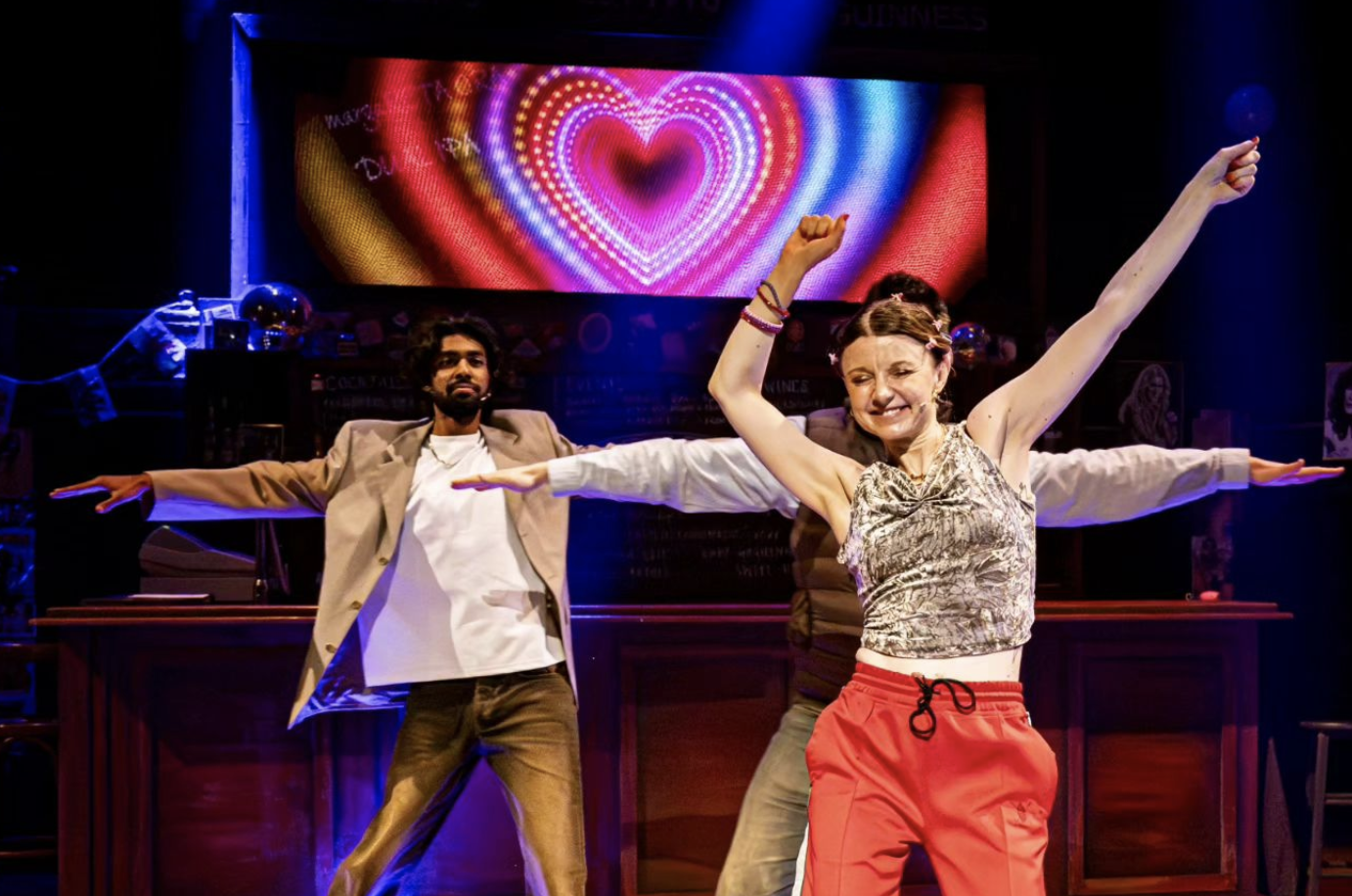
Shirley runs ‘the best pub you’ve ever been to’. A place where every night ‘is a night to remember’. Above all else, this landlady wants all her patrons to feel two things: ‘welcome… and magic’.
Quite a high bar, but if first impressions are anything to go by, it looks as if it can be easily cleared. The audience are immediately met by an expansive set that has totally transformed the Sherman’s Studio theatre into a local Cardiff watering hole. Some are even gifted with the opportunity to sit away from the standard auditorium chairs and immerse themselves on the set itself, getting the chance to be a real life punter at Shirley’s beloved public house.
First thing you notice – a wall of portraits displaying pretty much every famous ‘diva’ pop star you can think of. Second thing – a large chalkboard above the bar, advertising ‘diva’ inspired drinks (personal favourite: Amy Housewine). From this, you can already glean that Shirley has some quite specific and significant role models, but on closer inspection you discover there are two portraits of people you don’t recognise, and these are displayed with just as much prominence as Cher and Beyonce.
So we have an immersive set – tick. Subtle and sporadic hints to what kind of characters inhabit it – tick. A sense of anticipation building for a spectacular show that will pay tribute to some of the world’s greatest entertainers – double tick.
But then, the lights go up on an opening scene which feels a little stilted. There’s Shirley, but she doesn’t seem to be displaying much in common with her charismatic heroes, plastered across the walls. Either side of her, a mute regular reading a newspaper and a perplexingly American sales-rep struggling to make small talk. They all seem to be engaged in a naturalistic rhythm that you might realistically stumble upon on a quiet afternoon in a Cardiff pub. So, I start to worry this is a little at odds with the tone that has been promised.
Within moments, I am slapped out of my pessimism by a musical fever dream. Shirley takes centre stage, suddenly embodying the power and charisma of her idols tenfold, and her uninspiring companions have even taken on the role of her backing dancers. It was a trap! From here on in, there is no way I can predict what’s coming next. Sex? Karaoke? A life-changing diagnosis? One of the best seagull impressions I’ve ever witnessed? Maybe this will be a night to remember after all.
 Lowri Jenkins as Shirley. CREDIT: Jorge Lizalde
Lowri Jenkins as Shirley. CREDIT: Jorge Lizalde
In essence, Jenkins is tasked with portraying someone with a dual personality, a person who feels the need to forever perform and present a refined version of herself to the world. But Jenkins does so without ever splitting Shirley in two. She is never simply ‘Confident Shirley’ or ‘Vulnerable Shirley’, she conveys the precarious lines between both personas, revealing a character that is truly multifaceted, rather than conveniently changeable when the script requires.
Nick Hywell does a fine job as Nigel, a local who pines after Shirley (and later, as the aforementioned seagull), and Ritesh Manugula is a great addition playing the faux-enlightened sleazebag, Marcus. Both represent, along with Shirley’s off-stage and absent father, a collection of disappointing men in her life that fail to recognise her true worth.
Jenkins’ script is packed with sharp observational comedy, but also tackles deeply traumatic circumstances through an authentic exploration of premature menopause. It explores the subject with care, often using poetry to elucidate raw feelings of lost potential. For the most part, it deftly utilises a series of hallucinogenic musical sequences to convey narrative developments in a way that is far more creative and entertaining than straight dialogue. Although, I felt there was a little bit of an overreliance on this method to do some heavy lifting as the play raced towards its conclusion.
This was somewhat remedied by a finely crafted closing scene in which Shirley forms a touching connection with a young barworker, Carley. In these brief few moments, Carley appears to represent both the child Shirley could have had and the person Shirley could have been. In the midst of this, she makes peace with the fact that neither came to pass and instead discovers a confidence in herself that no longer needs to be fuelled by her diva deities. It draws a thought-provoking conclusion, the notion that whilst others can be used as inspiration, true power already lies within.
Ultimately, Shirley the play, like Shirley the landlady, achieves everything it sets out to. The audience – or rather, the punters – certainly end up feeling welcome, and thanks to a generous sprinkle of that promised magic, by closing time, a fair few will have undoubtedly had a night to remember too.
SHERMAN THEATRE, Cardiff – until 5th October 2024

